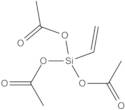VINYLTRIACETOXYSILANE
CAS: 4130-08-9
Ref. 3H-SIV9098.0
| 2kg | Descontinuado | ||
| 100g | Descontinuado | ||
| 18kg | Descontinuado | ||
| 225kg | Descontinuado |
Informação sobre produto
- (Triacetyloxy)vinylsilane
- 2-Silylethene-1,1,2-Triyl Triacetate
- Ap 3000
- Ethenylsilanetriyl Triacetate
- Geniosil GF 62
- Ls 2040
- NSC 93913
- Ofs 6075
- Sh 6075
- Shc 001B
- Ver mais sinónimos
- Silanetriol, 1-ethenyl-, 1,1,1-triacetate
- Silanetriol, ethenyl-, triacetate
- Silanetriol, vinyl-, triacetate
- Sz 6075
- Triacetoxy(vinyl)silane
- Triacetoxyvinylsilane
- Vinyl trimethoxyacyloxy silanes
- Vinylsilane triacetate
- Vinyltriacetoxysilane
- Vinyltrimethoxyacyloxygroupsilane
- Vinyltrimethoxyacyloxysilane
- Xiameter OFS 6075
- Z 6075
- [Diacetyloxy(ethenyl)silyl] acetate
- Vinyltriacetoxy silane
Olefin Functional Trialkoxy Silane
Silane coupling agents have the ability to form a durable bond between organic and inorganic materials to generate desired heterogeneous environments or to incorporate the bulk properties of different phases into a uniform composite structure. The general formula has two classes of functionality. The hydrolyzable group forms stable condensation products with siliceous surfaces and other oxides such as those of aluminum, zirconium, tin, titanium, and nickel. The organofunctional group alters the wetting or adhesion characteristics of the substrate, utilizes the substrate to catalyze chemical transformations at the heterogeneous interface, orders the interfacial region, or modifies its partition characteristics, and significantly effects the covalent bond between organic and inorganic materials.
Vinyltriacetoxysilane; Triacetoxyvinylsilane; Tri(Acetoxy)Silylethylene; Ethenylsilyltriacetate
Crosslinker for moisture-cure silicone RTVs with greater liquid range for formulation, faster moisture-cure rate and better substrate adhesion properties than methyltriacetoxysilaneForms copolymers with ethylene for moisture induced coupling of polyethyleneEmployed as a coupling agent, adhesion promoter, and crosslinking agentUsed in microparticle surface modification for fillers





